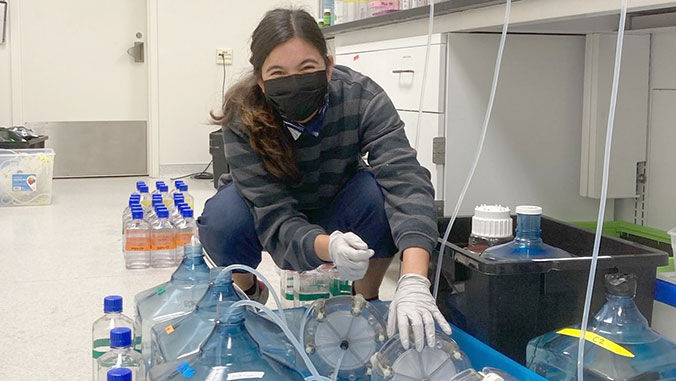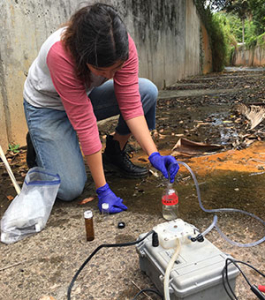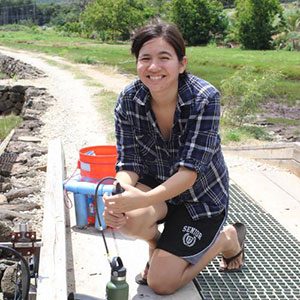
Prior to joining the University of Hawaiʻi at Mānoa School of Ocean and Earth Science and Technology (SOEST), Sofia Suesue was pursuing an associate’s degree in natural sciences at Windward Community College and enrolled in a summer oceanography course at UH Mānoa, Halau Ola Honua’s Mauka to Makai, that focused on the management of watersheds on Oʻahu.
“Through the Mauka to Makai course, I became more interested in studying oceanography and found pursuing a career in research to be a more possible aspiration than I originally thought,” said Suesue. “Also, with my experience in the course I believed I could utilize what I would learn [in GES] to one day help with some of the environmental issues in our coastal areas.”

Raised on the windward side of Oʻahu, environmental science had always intrigued Suesue. Michael Guidry, summer course co-coordinator and director of the Global Environmental Science (GES) program, encouraged her to transfer to SOEST after graduating from Windward CC.
Caffeine, herbicide, antibiotic pollution of watershed microbes
After joining the GES bachelor’s degree program in the Department of Oceanography she focused her senior thesis research on the potential impacts of pollutants—including caffeine, the herbicide glyphosate and the broad-spectrum antibiotic sulfamethoxazole which is used to treat infections—on microbial communities in stream and coastal environments.
Suesue surveyed the Kahaluʻu-ʻĀhuimanu stream system on the windward side of Oʻahu to measure how the concentration of the three contaminants changed from inland to coastal environments. She was guided by (SOEST) mentors Henrietta Dulai, Earth sciences professor, and Craig Nelson, associate researcher in the Department of Oceanography and Hawaiʻi Sea Grant.
Her findings suggest that caffeine degrades in concentration from the inland portion of the stream to the nearshore and it may have an impact on microbial metabolism. Her research also showed that glyphosate and sulfamethoxazole were stable in both marine and freshwater systems with higher concentrations in nearshore sections of the stream, suggesting they can be delivered into coastal areas where they may persist.

“Observing potential pollutant attenuation by microbes only within inland, non-channelized portions of the stream system suggests that inputs from all other areas may be more likely to export into coastal waters which could lead to the increased occurrence of environmental and public health concerns connected to pollutant presence,” said Suesue.
Testing microbes’ response to contaminants
After this survey, the researchers selected four sites across the stream system and two within Kāneʻohe Bay. They conducted a lab experiment wherein they added contaminants to the water samples collected from these areas and observed changes in the contaminant concentration and microbial density over the course of two weeks.
“If we observe a decrease in contaminant concentration and significantly higher cell density, that may suggest that a contaminant was being used as an energy source for microbes,” said Suesue. “This is what we observed in the samples to which we added caffeine. It appears that it may have an impact on microbial metabolism in that system.”
The team was struck by how persistent all three compounds were in marine ecosystems, remarking that “these experiments add to the growing concern over the long-term persistence of chemicals associated with human pollution sources.”
For more information, see SOEST’s website.
–By Marcie Grabowski

